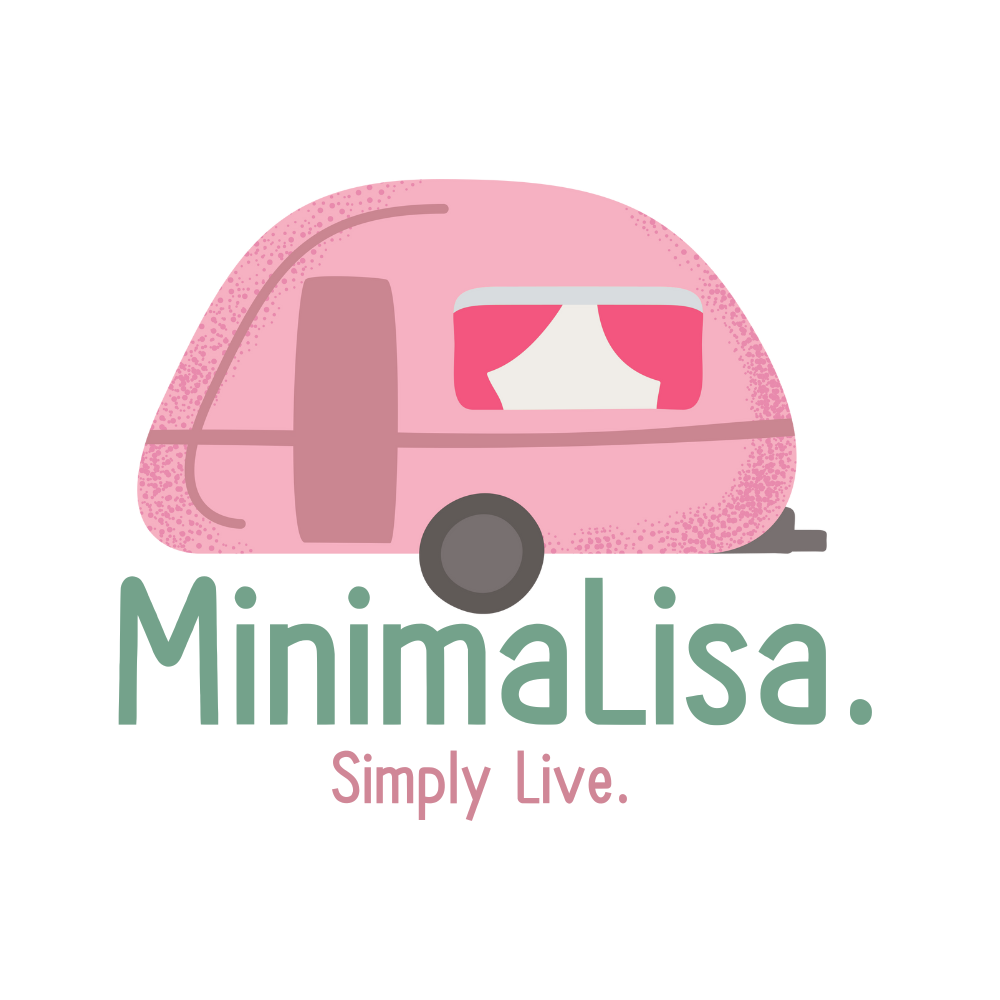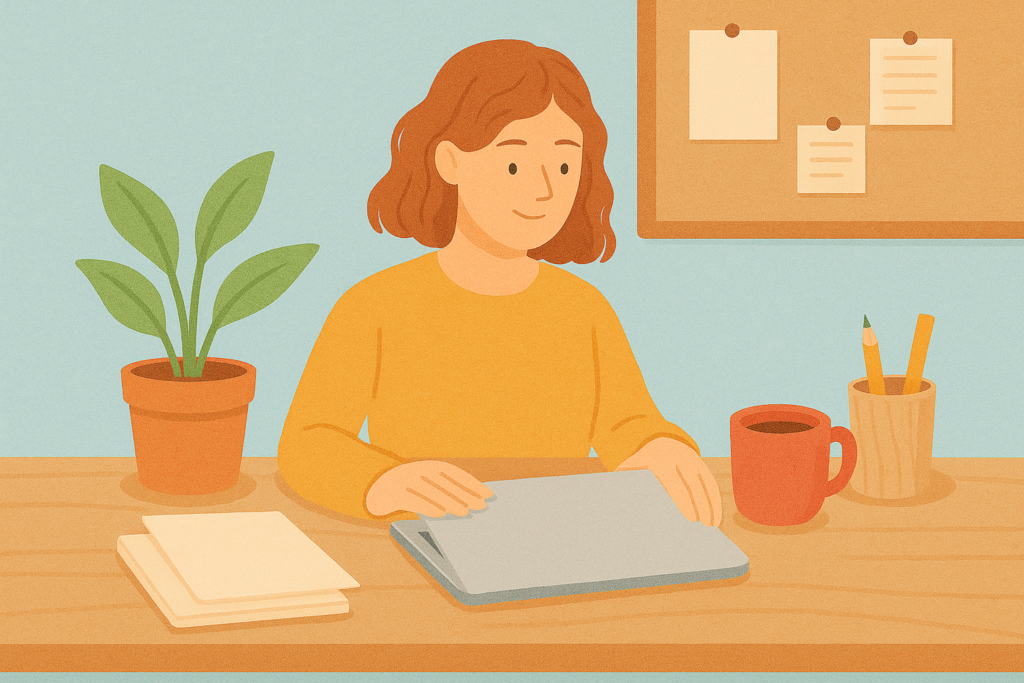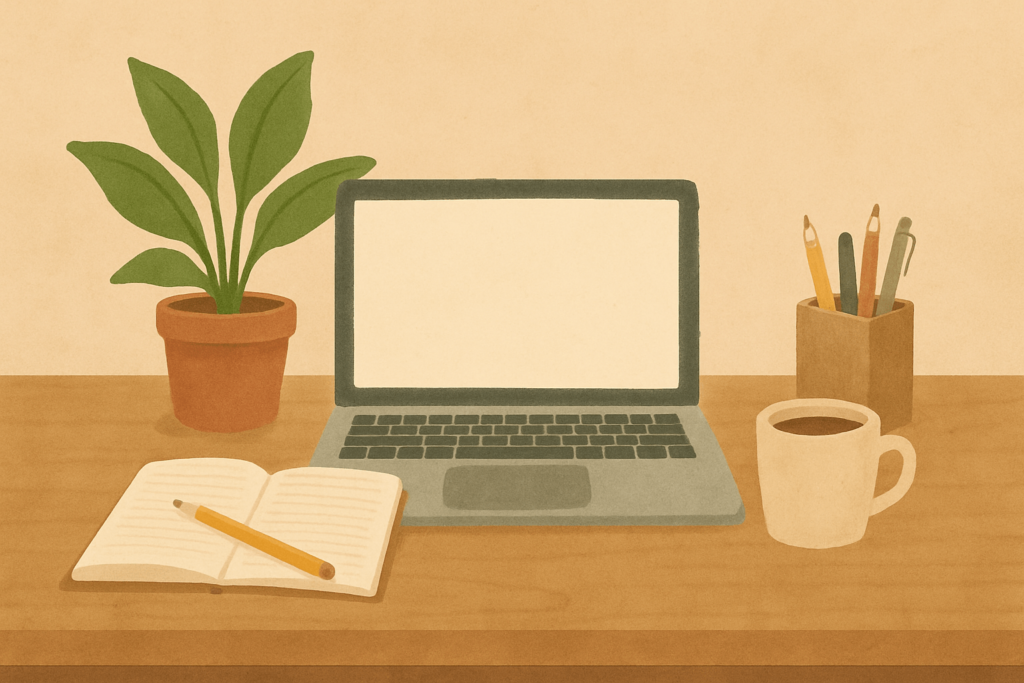There’s a desk in every home. In some cases, it’s an organized haven of thought. In others – a battlefield of scattered notes, charging cables, unopened letters, and pens that no longer write. Somewhere between those two extremes lies an invitation – to pause and ask: what really needs to be here?
This isn’t just a question of aesthetics. The state of our desk mirrors something deeper: our state of mind. Our ability to focus. Our internal sense of order. And when everything piles up – it’s not just papers that get buried, but often also our clarity, motivation, and space for creativity.
Desk clutter is rarely random. It tells a story. The cup you haven’t returned to the kitchen. The half-finished to-do list. The sticky note with an idea you once had but didn’t follow up on. Each item is a small echo of past intentions, interruptions, emotional moments. And without noticing – the desk becomes a place of accumulation, not of intention.
But what if the desk could be different? What if it could become a place of calm, presence, and real work?
The myth of the productive mess There’s a romantic idea that creativity thrives in chaos – but more often, clutter drains us. It steals our attention. Every object on the desk is a potential distraction, an unfinished business, a question mark waiting for attention. And over time – that noise adds up.
We may not always realize it, but a cluttered desk creates emotional weight. It reminds us of what we haven’t done. It triggers guilt, pressure, and sometimes even avoidance. So we look at the mess – and instead of sitting down to do the work, we go make coffee. Again.
Minimalism doesn’t mean sterile. It means intentional. When people hear “minimalist desk”, they imagine a white table, a single plant, and nothing else. But that’s not the goal. The question is not how little we can have – but how aligned what we have is with what we need.
A desk should support us. Not distract us. It should hold space – not occupy it. It should make us feel like we can breathe, think, and do the next thing without battling through piles of unprocessed input.
So – what really belongs on the desk?
- One clear surface. Start by choosing one surface that will be your true workspace. It doesn’t have to be big – just defined. That space is sacred. It stays clear when not in use. It’s where you go to be with one thing at a time.
- Tools you actually use. If you write by hand – one good pen, a notepad. If you work digitally – your laptop, a charger, maybe headphones. The rule: if it hasn’t been touched in a week, it probably doesn’t belong on the desk.
- One source of inspiration. A photo. A quote. A small object with meaning. One thing that reminds you why you’re here. Not ten. Not a collage. Just one honest reminder.
- Light. Natural light is best. But if not, then a warm lamp that feels welcoming. Light influences our energy more than we realize. A soft, focused light invites us in.
- Clarity system. A simple way to capture what comes up: a to-do list, a small tray for incoming papers, a digital task manager. The point is not to process everything on the spot – but to have a place where nothing gets lost.
And what doesn’t belong?
– Unfinished projects that aren’t in use today. – Piles of unsorted documents. – Multiples of the same item (5 pens, 3 notebooks). – Things we feel guilty about. – Old to-do lists.
The desk is not a museum of past intentions. Let go of the fantasy that everything has to be in front of us in order to be remembered. Our brain works better when it’s not constantly reminded of what it hasn’t done. When we put things away – we don’t lose them. We just tell ourselves: not now. And that’s a powerful boundary to set.
What happens when the desk becomes intentional? We start to feel lighter. More focused. More capable of engaging fully with what matters. We stop wasting time looking for things. We stop sitting down only to feel overwhelmed before we even begin.
But more than that – the desk becomes a place we want to come back to. It becomes a cue for presence. A small island of clarity in a world that constantly demands our attention.
Minimalism here isn’t about having less for its own sake. It’s about creating a space that reflects what matters – and letting go of the rest.
This isn’t a one-time reset. It’s an ongoing practice. Just like we tidy up a kitchen after cooking – we can clear the desk at the end of each work session. Not out of obligation. But out of care. Out of respect for our focus, for our time, for the work we’re here to do.
Because ultimately – a desk is never just a piece of furniture. It’s a threshold. A gateway to our thoughts, our actions, and our attention.
And when we treat it as such – the work that happens there begins to carry more weight, more depth, and more meaning.



